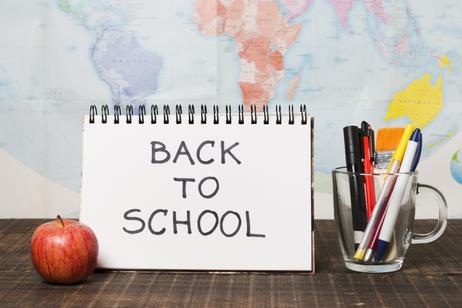Preparing Students for Boarding School After Long Summer Gaps: Academic & Social Readjustment Tips
The transition back to boarding school after a long summer break can be both exciting and challenging for students. For many, summer represents unstructured time, family travel, jobs, or relaxation. Returning to the structured academic and social environment of boarding school requires a thoughtful adjustment process. With the 2025 school year underway, parents, educators, and students alike are seeking effective strategies to bridge the gap between summer freedom and the rigor of boarding school life.
This article explores academic and social readjustment tips to help students thrive, ensuring the return to campus is smooth and successful.
Why Summer Gaps Matter
Long summer breaks can significantly affect student readiness for boarding school. Research shows that students lose between one to three months of academic progress during summer—commonly referred to as the “summer slide.” According to the National Summer Learning Association, learning loss is most noticeable in math and reading. In addition, time away from peers and structured routines can make reentering the social environment of a boarding school more daunting.
Boarding school students often face:
Academic challenges: Reacclimating to advanced coursework, homework schedules, and test preparation.
Social challenges: Rebuilding friendships, adjusting to dorm life, and reestablishing routines.
Emotional challenges: Homesickness after being with family for an extended time, or anxiety about academic expectations.
By preparing in advance, families and schools can help students minimize these hurdles.
Academic Readjustment Tips
1. Restart Structured Learning Early
Students who engage in structured academic activities before returning to boarding school experience less stress when classes begin. Encourage reading, writing, or problem-solving exercises in the final weeks of summer. Some families opt for short academic camps, while others use online platforms to review core subjects like math and English.
2. Rebuild Study Habits
Good study habits can fade over summer. A gradual return to daily study routines—such as setting aside 30–60 minutes for focused work—helps students regain concentration and endurance.
3. Prioritize Core Subjects
The “summer slide” tends to impact math and reading the most. Parents can support students by encouraging:
Reading novels, biographies, or nonfiction tied to their interests.
Practicing math through apps or problem sets.
Reviewing boarding school syllabi (if available) to get ahead.
4. Explore Academic Enrichment Opportunities
Some boarding schools offer pre-orientation academic refreshers or summer packets. If available, these are excellent tools for smoothing the transition. Families exploring options for additional preparation can learn more about the benefits of a boarding school education, including how schools help students grow both academically and socially.
Social Readjustment Tips
1. Reconnect with School Friends
Encourage students to reach out to friends before the term begins. Video calls, social media, or group chats help reestablish bonds, reducing first-day jitters.
2. Practice Dorm Life Routines
New and returning boarding school students benefit from practicing dorm life at home. This includes managing personal space, doing laundry, and setting consistent sleep schedules.
3. Encourage Healthy Independence
Over summer, students often enjoy parental guidance in daily tasks. Returning to a boarding school requires independence. Parents can prepare students by gradually giving them more responsibility for chores, budgeting, and time management.
4. Address Social Anxiety
After months away from peers, some students feel anxious about fitting in. Encourage open dialogue about concerns and emphasize that others are experiencing the same readjustment process. Schools often provide orientation programs and peer mentoring to ease this transition. For families still in the school search process, reviewing guides like how to choose a boarding school can help align student needs with the right environment.
Emotional and Wellness Readjustment
Boarding school students not only face academic and social adjustments but also emotional ones. Wellness is key to a successful return.
Sleep hygiene: Establish consistent bedtimes at least two weeks before school starts.
Physical fitness: Encourage regular exercise to boost mood and stamina for extracurriculars.
Mindfulness practices: Techniques such as journaling or meditation can help students manage stress.
Communication habits: Setting healthy expectations for family check-ins (weekly calls or messages) helps balance independence with emotional support.
Role of Parents in the Transition
Parents play a vital role in easing the readjustment process. Here are some strategies:
Create a transition plan: Set goals for study habits, health routines, and social readiness.
Encourage resilience: Normalize challenges and remind students that adjustment takes time.
Model positive attitudes: Enthusiasm and confidence from parents reassure students.
Partner with educators: Boarding schools often provide transition resources—parents should engage with advisors and dorm staff for guidance.
Role of Boarding Schools
In 2025, many boarding schools are investing in enhanced transition programs, recognizing the challenges long summer breaks pose. Common supports include:
Orientation weeks with team-building exercises.
Peer mentoring programs pairing new students with upperclassmen.
Learning centers offering tutoring or study skill workshops.
Wellness resources, including counseling services and stress management workshops.
Parents should review their child’s school offerings and encourage active participation in these programs.
Preparing New vs. Returning Students
| New Boarding Students | Returning Boarding Students |
|---|---|
| Face the challenge of living away from home for the first time | Must readjust to academic rigor and social dynamics after months away |
| Benefit from pre-orientation programs and family visits to campus | Should focus on rekindling friendships and reestablishing study habits |
| May need guidance on homesickness and independence | Often need help balancing leadership roles with academics |
Both groups require preparation, but returning students generally need less hand-holding, while first-timers benefit from more structured parental support.
Expert Commentary
Dr. Allison Grant, a child psychologist specializing in student transitions, emphasizes:
“The key to a smooth return to boarding school is balance—balancing academic readiness, emotional well-being, and social reconnection. Students who prepare in all three areas are far more likely to thrive after the summer gap.”
Similarly, boarding school faculty recommend open communication. As one dean of students at a New England boarding school shared in 2025, “The students who transition best are those whose families encourage independence while staying engaged with their growth.”
Final Takeaways for 2025
Preparing students for boarding school after long summer gaps requires a holistic approach. Families should focus on academic refreshers, social readiness, and emotional resilience. Boarding schools continue to expand support programs, but parental involvement remains the cornerstone of a smooth transition.
With intentional preparation, students can enter the academic year not only ready to meet challenges but also positioned to thrive—academically, socially, and emotionally.














